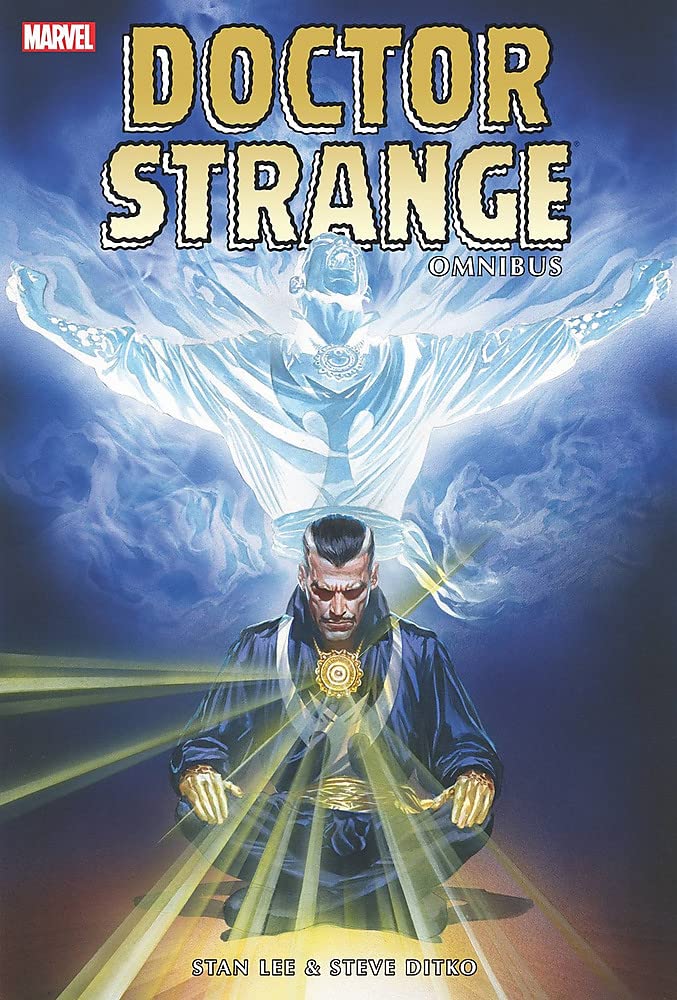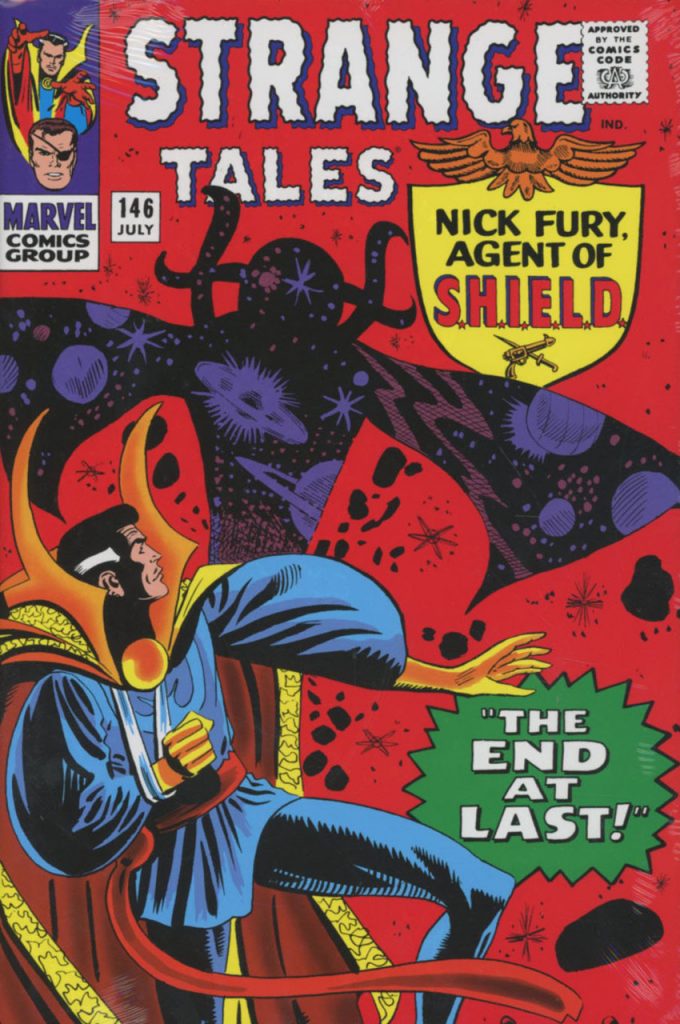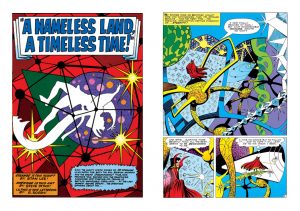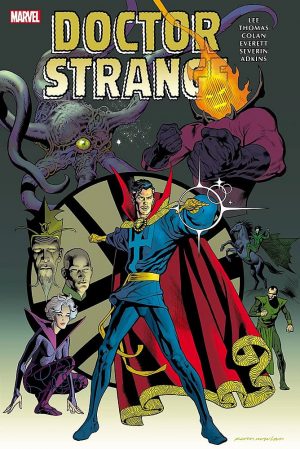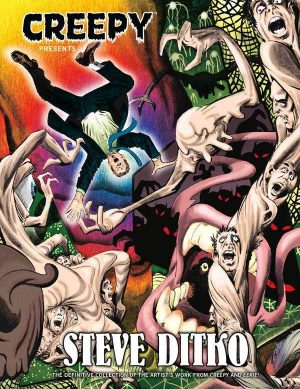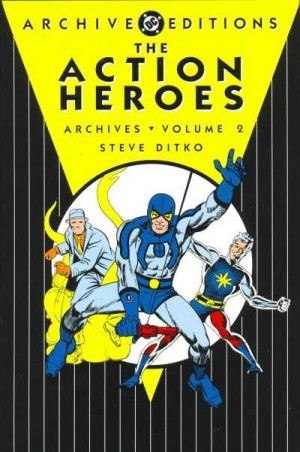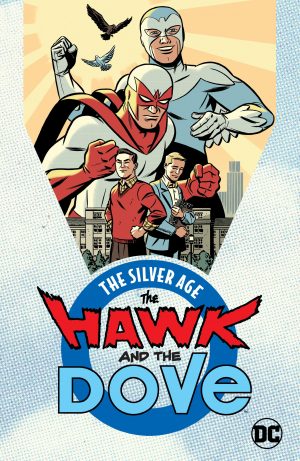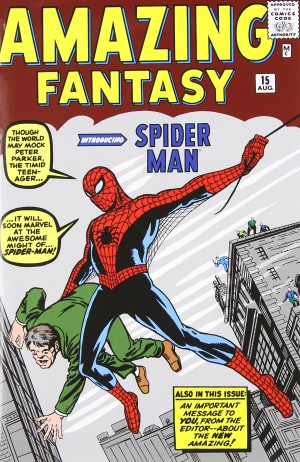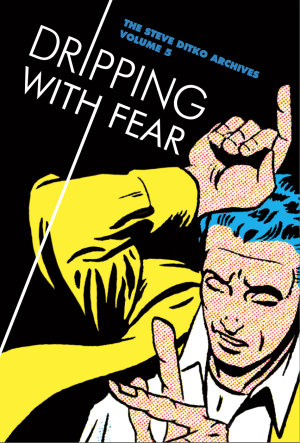Review by Graham Johnstone
The 2022 release of the second Doctor Strange film saw new reprints collecting Steve Ditko’s entire groundbreaking opening run on the character. This hardback is the deluxe edition with oversized pages, but the complete contents are also available in Epic Collection: Master of the Mystic Arts, and the budget Masterworks paperback (2022 release only).
The creative contributions of Marvel frontman Stan Lee and his artist partners have been much debated. It seems accepted though, that artist Steve Ditko came up with Doctor Strange as a supernatural short. The initial one-offs involve haunted houses and dangerous idols, fitting easily into the existing format. An origin story only appeared well into the run. Tibetan mystic the Ancient One has two disciples. Baron Mordo is secretly power-hungry, while the initially vain and selfish Stephen Strange is ultimately good. They become arch rivals fighting for our world. It has the mythic quality that’s much of the reason these early Marvel properties have endured.
Lee acknowledges the debt to radio show Chandhu the Magician, who had similar powers and learnt his skills from an eastern yogi, for whom he acted as a physical agent in the world. What made the comic transcend its origins was Steve Ditko’s depiction of the magical worlds and phenomena.
Ditko draws on a range of visual inspirations. In Strange’s ‘sanctum’ the furniture and bric-a-brac, the reptilian statues, and the curved shapes are gothic, but as if filtered through the Aesthetic and Art Nouveau art movements of the turn into the 20th Century. You can also see the latter in the elongated figures and hands. There’s the ‘orientalist’ look of Aubrey Beardsley’s Salome – the tapering, intersecting curves of the magic spells. The depiction of magical dimensions draws on Surrealism – the melted and floating elements of Dali, and Yves Tanguy. It’s hard to think of rival artists tailoring such a range of inspirations for one title.
Ditko makes innovative use of the ink lines to create magical effects. In one early short, Strange communicates with the distant Ancient One through a ‘window’ of swirling, rippling rings; next he contains a dangerous idol within a single heavy, slightly rippled line; finally, when he decides to follow missing people into the idol, we see him inside a ringed cone being funnelled into the tiny figurine. Such effects are central to the initial and enduring appeal of the series. Ditko influenced all subsequent depictions.
The content really takes off with an extended story arc where Dr Strange battles Baron Mordo, and the powerful ruler of an alternative dimension, the Dread Dormammu. Mordo pursues Strange, as he searches for the secret of ‘Eternity’. It’s compelling and packed with memorable scenes: Mordo’s wraiths chasing Dr Strange’s ‘ectoplasmic form’ through a busy airliner, and Strange flying through giant atoms (pictured, left) into the sun to shake off the cowardly Mordo. Best of all, is the episode where Strange seeks to retrieve the secret of Eternity within the mind of the physically comatose yet mentally powerful Ancient One. Running over eighteen monthly episodes, this was was a highpoint of 1960s Marvel, and arguably their first graphic novel. It’s still gripping, inventive, and visually dazzling. Ditko, however was unhappy at Marvel, and his departure was abrupt – sadly reflected in the ‘scorched earth’ conclusion to what might be his finest story.
The same material is also gathered in out-of-print editions: across Volume 1 and 2, of the earlier Masterworks editions, and the first Essential collection ‘phonebook’. Their lower scores reflect the balance between prime Ditko and weaker inclusions. Strange continues under other creators in Omnibus 2.
